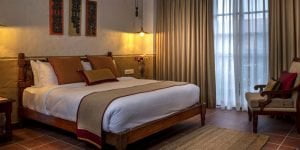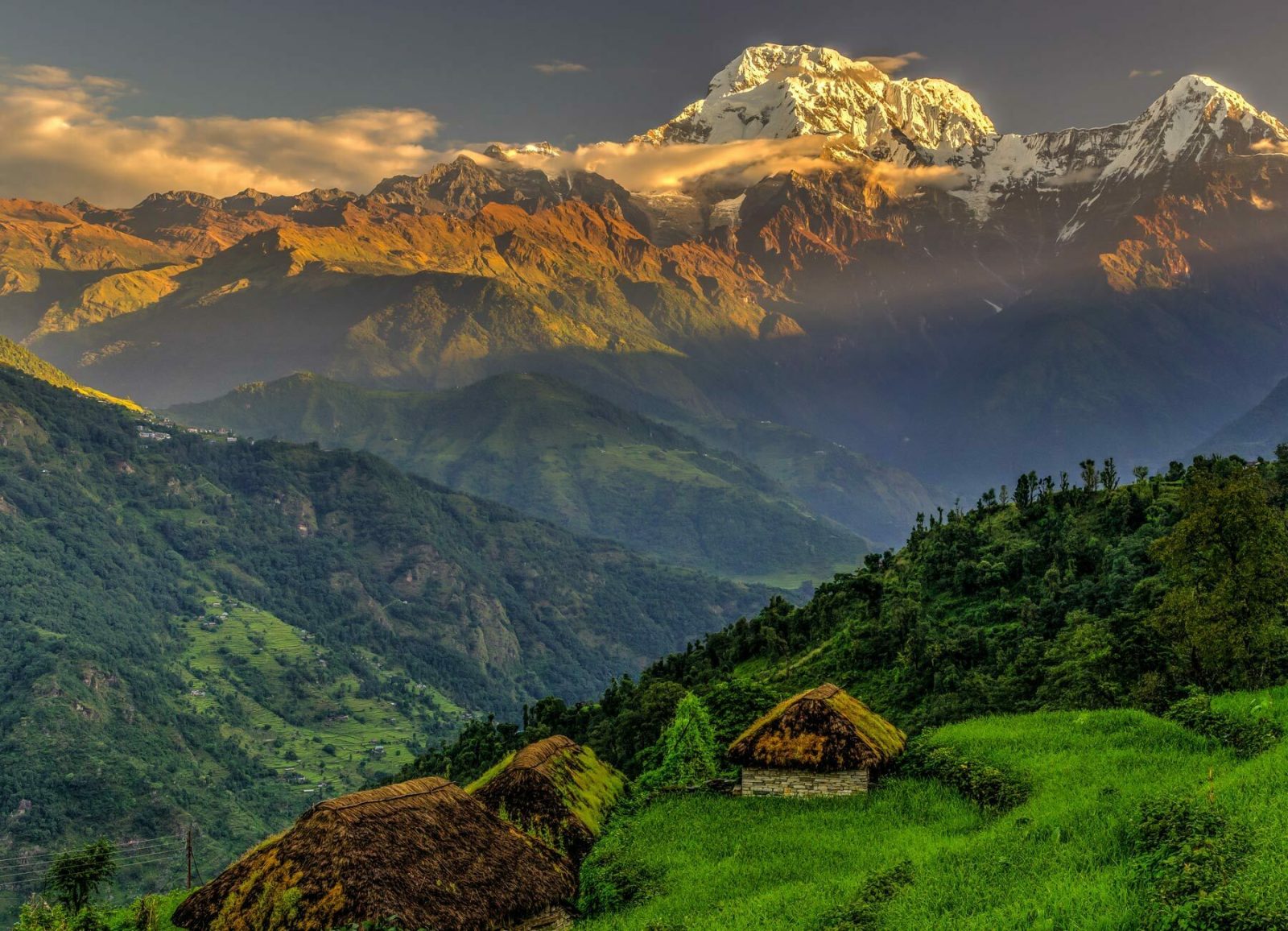Annapurna Circuit
16 Days 2500 ex Kathmandu
Accommodation
4 Nights Hotel Stay
11 Nights Tea House

Transportation
Mostly on foot
Transfers included
1 Porter 1 Trekker Policy

Included Meals
15 Breakfasts
12 Lunches
12 Dinners
All Open Menu Your Choice

Trip Grade
Category 3
High Heart Rate Holiday
Standing at the edge of the village, time seems to stop. The barren landscape forms a dusty bowl around an oasis of apple orchards and cobblestone streets. Homes are outlined with panels made from cherrywood. If I was photographing for a magazine, this would be it — Marpha is one of those places you have to see to believe.
My heart beats faster as I climb stairs to the village’s monastery. Inside the temple, monks have already begun to chant the morning puja (worship ceremony). Smoke from burning pine billows through the curtains covering the main entrance. I can see the village below: an intricate jigsaw of old and new, electric wires hanging above herbs and roots left to dry in the sun. Prayer wheels and Buddhist flags add splashes of color to the dusty environment, and vast fields of buckwheat, barley, and grain somehow thrive in impossible conditions. While other villages along the Annapurna Circuit show traces of modernization, Marpha has preserved its unique architecture and shape. It’s a place brimming with history and remnants of a time not yet lost.
I hear different languages than in other parts of our trek as many Tibetan refugees have settled here. Chhairo, a riverside cultural center, showcases artifacts and art from centuries of Buddhist culture and practice. Though I feel far away from what is familiar, some of the guesthouses have wifi, and the locals have gone out of their way to be exceptional hosts. I’m offered hot mugs of ghiu chia, a smoky, buttery tea that has become tradition. And for breakfast, I am served spongy Tibetan bread and seabuckthorn juice, a flavorful drink packed with vitamin C. Western foods are served in many of the kitchens, but I prefer to order what’s local: Thakali rice dinners with fresh vegetables and steaming lentil soup. Our meals have become joyful moments of rest and calm; we share stories from our day’s hike and toast to the next day’s adventures.
Local tea houses, snow-capped mountains and a world-ranked circuit.
Marpha is just one of many intriguing villages along my journey. How can I forget Kagbeni and Manang, the two villages flanking the challenge of the Thorong La Pass. And to my guide who suggested I add Tilicho Tal to my itinerary, thank you! Had I not attempted a trek through the Annapurna Region, I would have never found this slice of heaven. Though the trail leading to the lake is a challenge — landslides have eroded the path and sheer drops lead to the river below — the turquoise lake presents an unforgettable reward. From the edge of the frozen waters, I can hear the crackle of ice and avalanche in the distance.
In this area, round shell-like fossils named shaligram are sold as holy reminders of the Hindu god Vishnu. But on this trip, I don’t feel the need to pack any souvenirs; the photographs I’ve taken will make beautifully framed gifts after I return home. I only wish I had more days here. One visit doesn’t seem to be enough.
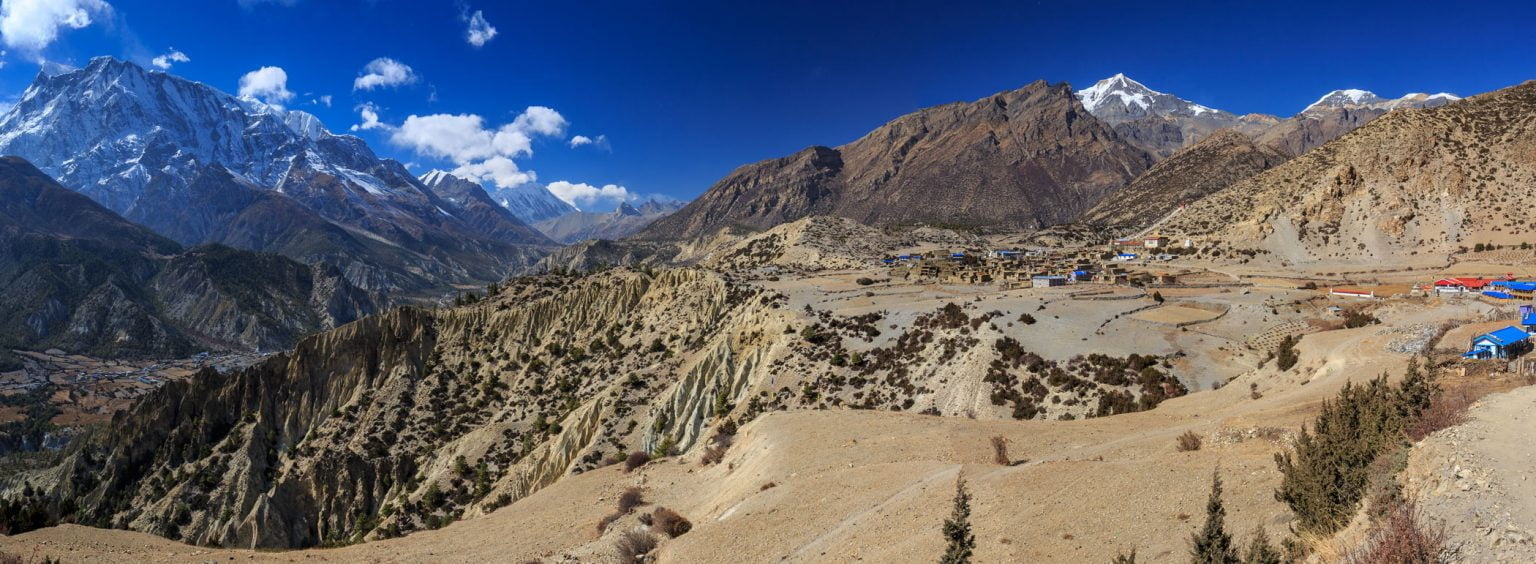
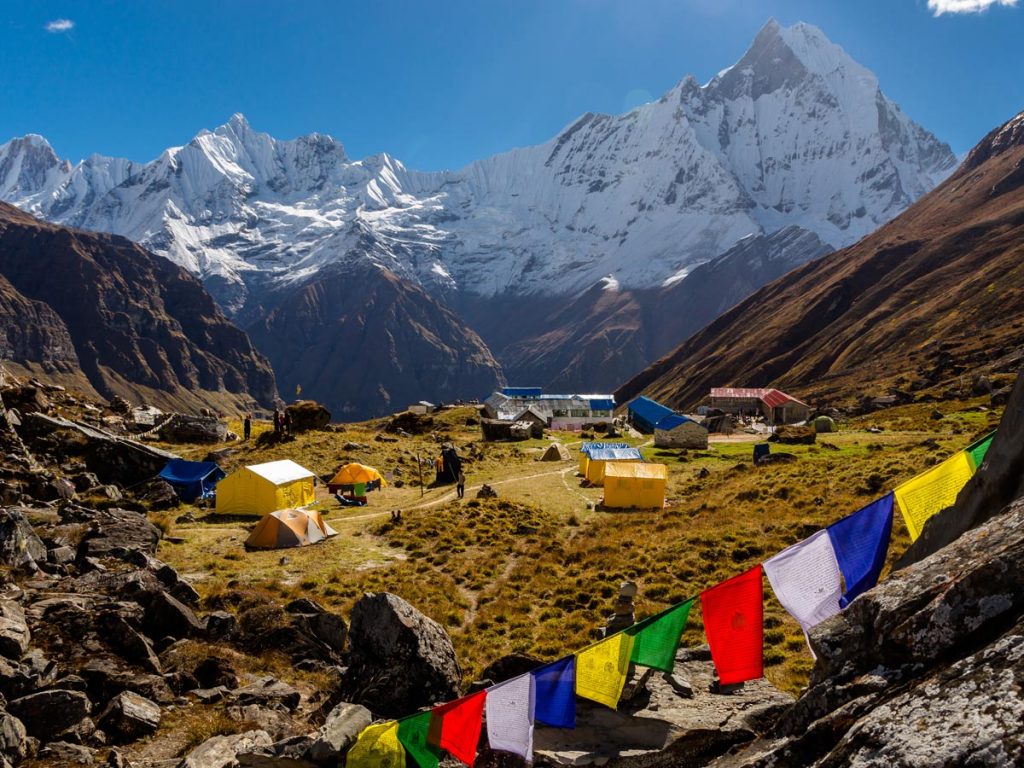
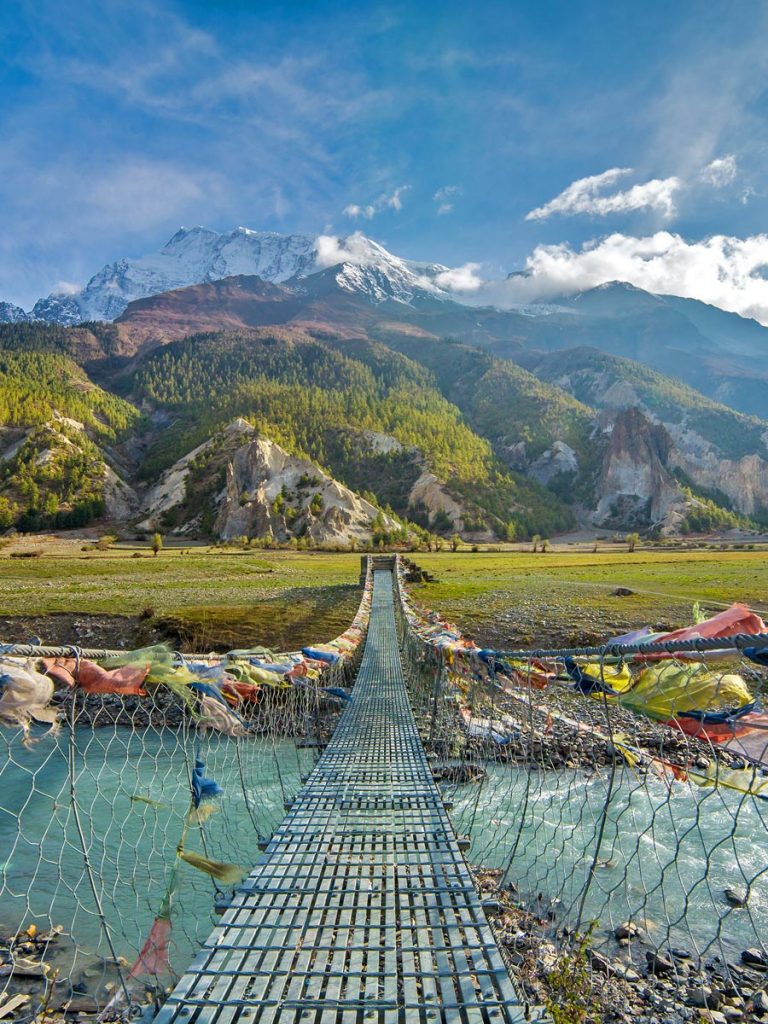
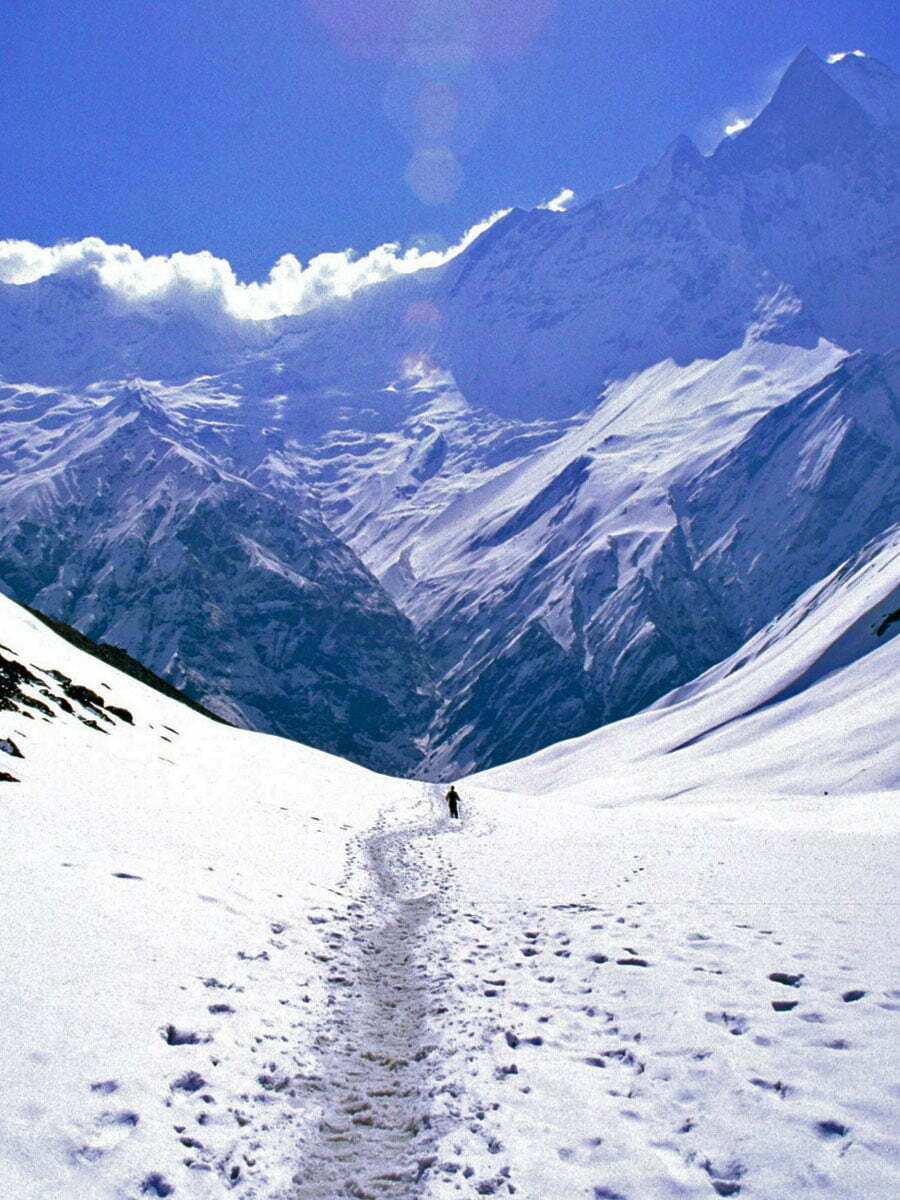
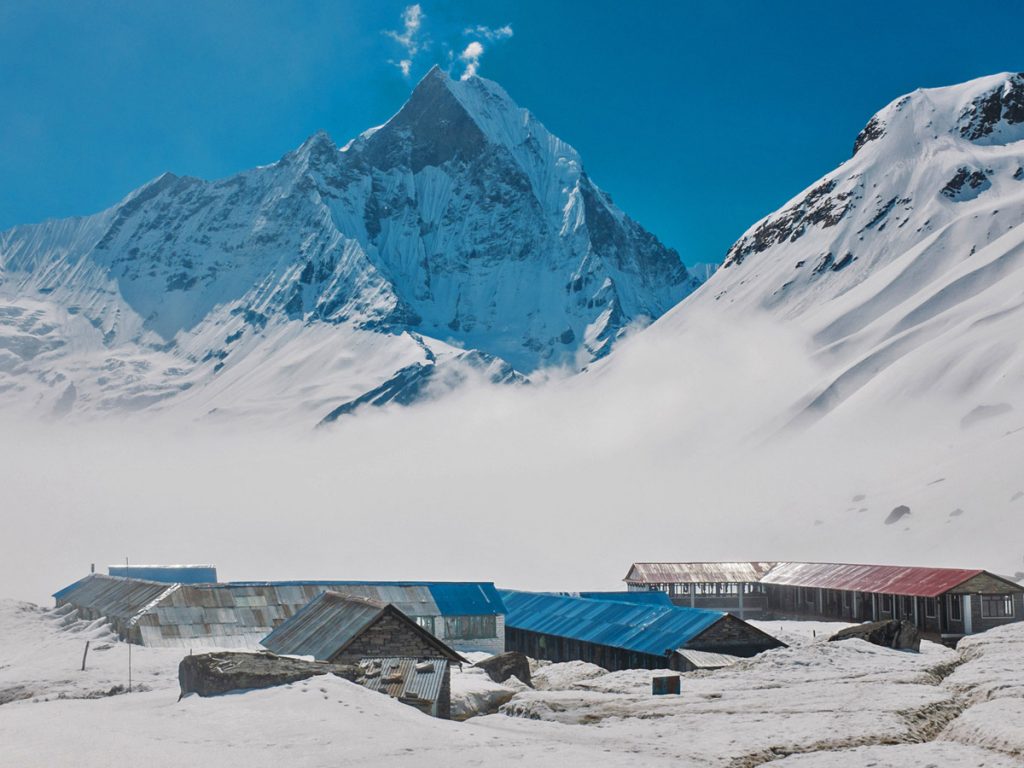
The Journey
Our staff will be waiting for you at Kathmandu’s International Airport. After escorting you to your hotel, you’ll have plenty of time to rest and relax before our evening dinner. Meet your teammates over a traditional Nepali Set and enjoy a dance performance with various cultural themes. Bring your camera! Guests often join the revelry. (D)
Explore Kathmandu’s historic and cultural sites, including the towering white dome of Boudhanath and riverside Hindu temples of Pashupatinath. In the afternoon, we’ll distribute all necessary gear for our trek and answer any questions about what to expect in the days leading up to Annapurna Base Camp.
After coffee and breakfast, we will make our way to the start of our trek in private transport. Green hills and farming lands will unfold before us as we exit the Kathmandu valley and head into the countryside. Once we reach Besisahar, we will make sure all equipment and necessary permits are ready for our journey and then start our trek to Bulbule. (B,L,D)
The start of our trek crosses the Marsyangdi River and passes small homesteads with villagers tending to fields of rice and greens. Beyond the village of Bhulbule, a large waterfall gushes over rocky crags, and the edges of Mt. Manaslu begin to fade from view as we enter the community of Ngadi. From Bahundanda, we will carefully make our way along the steep descent to Chamje. Suspension bridges are decorated with silk prayer scarves, and a small hot spring offers sore feet relief. Our path follows the riverbed until we reach the stony village of Jagat. (B,L,D)
After a short hike we arrive to Chamje. Local raksi, alcohol fermented from wine and barley, is often poured after dinner while guides and porters play cards. From Chamje we continue on leaving the river valley behind and head westward toward Dharapani.(B,L,D)
Following the south bank of the river, we will climb towards Syal Khola with clear views of Lamjung Mountain and Annapurnas II and IV. After passing over another bridge, we will carefully traverse landslides and make our way through thick forests and planted apple rows. Buddhist prayer wheels line the entrance to Chame where coloured prayer flags mark homes and religious sites. (B,L,D)
Pisang marks the beginning of Manang District. Locals are known for their ability to simultaneously manage harsh winters and welcome guests with huge smiles. With two regions to explore, Upper and Lower Pisang contains monasteries, old homesteads and incredible views. To reach this area, we will climb to Telekhu and through the forests of Brathang. The river meanders alongside our trail, and small children may rush to ask for “Candy! Chocolate!” Accommodation is pleasant and comfortable, and heaping plates of rice and vegetables are served hot. (B,L,D)
From Pisang, we have a steady walk towards Manang. We’ll rest at the Tibetan village of Bryaga where houses are built vertically and an ancient monastery overlooks the valley. The landscape here is dry and filled with slate cliffs from which Manang appears like a vision. Complete with bakeries, pool halls, and a movie theatre with English films, Manang makes a great resting point. (B,L,D)
To allow our bodies to adjust to the altitude, we spend one day in Manang. There are several hikes in the area and a beautiful lake to explore, but we encourage everyone to recover and get used to the increasing elevations. There are several coffee shops with wifi so you can get in touch with friends at home. (B,L,D)
As we climb higher, vegetation becomes thin and our trail grows increasingly rocky. Blue sheep often line the meadows of Yak Karhka where grey ridges are often dusted with snow. After stopping for lunch, we continue the climb to Ledar to rest for the night. (B,L,D)
Today will be conservative to save energy and prepare for our highest point on our trek, Thorong La Pass. Heading east to Thorong Phedi, rocky fields and vertical cliffs carve steep visual edges. Sometimes sheep or snow leopards hide behind boulders, and the calls of birds soaring overhead echo throughout the canyon below. Our hike time today is short, and the afternoon can be spent playing games or writing postcards to friends at home. (B,L,D)
Our morning begins early so we can safely attempt Thorong-La Pass. Weather conditions can make this section difficult, so we plan our ascent with care. It is a tiring climb but guides and porters stop regularly for rest. Stop at the teashop for a hot coffee or Snickers before the long descent toward Muktinath. Herds of sheep and yak may pass, and prayer flags add to the majesty of the Annapurnas. Upon arriving at Muktinath, religious pilgrims from all over the world visit temples and monasteries to purge sins and wash away transgressions beneath fountains while other travelers enjoy funky bars and lively restaurants with music, baked goods, and Western-style foods. (B,L,D)
From Muktinath, we walk through meadows and beside bubbling streams to Kagbeni, a visually rich village surrounded by orchards and soaked in traditional Tibetan practice. A mixture of language and dialects are spoken and locals wear native dress. On our way to Marpha, we can sample local apple brandy or taste delicious apples for which this area is famous. Dusty winds sweep from the north as we enter Jomsom, and our night here will be a celebratory one for a journey well travelled. (B,L,D)
We will fly to Pokhara from Jomsom’s local airport and have the afternoon to spend as we choose. With various adventure sports — zipline, bungee jump and paragliding — the restless will have their fill. Those wanting to relax can book appointments as holistic spas or sip cold brews in one of the many open-air restaurants. At night, Pokhara comes to life with music and youngsters sporting the latest fashion, and an outdoor movie theatre posts an updated weekly list of popular English films to enjoy. (B,L,D)
Today we head back to Kathmandu via bus for a well-earned rest. Overnight hotel. (B)
Like many visitors who travel to Nepal, “Pheri Betaula,” or, “See you later,” is the easiest way to depart. You may not want to leave! (B)
Includes
- Arrival and Departure transfers on both domestic and international flights.
- 3 nights accommodation at Harati Manor Hotel twin share
- 1 night in Pokhara hotel
- OPEN and CHOICE of Full board meals while on expedition.
- One Trekker: One Porter Policy
- Accommodation at clean and comfortable tea houses or lodges.
- Welcome dinner with the cultural program as listed in the itinerary.
- Half day guided city tour with world heritage entrance permit as listed in the itinerary.
- All Domestic flights and airport tax.
- Private transportation to and from the starting and ending points of the trek as applicable.
- Free use of quality trekking gear – sleeping bag, fleece liner, down jacket, rain poncho.
- Professional local trek leader with Wilderness First Aid.
- Portable Altitude Chamber (PAC) / Gamow Bag (A life-saving device in case of Acute Mountain Sickness) along with a comprehensive First Aid Kit.
- Assistant trekking guides and other support staff for Annapurna trek.
- Trekking map.
- Personal Sherpa Porters to carry all personal gear.
- Insurance of all staff including Porters.
- Warm clothing and required trekking gear for Porters like Gortex jacket /trousers, trekking shoes, woolen hat, woolen gloves, woolen shocks, sunglasses etc.
- Complimentary souvenir Tshirt.
- TIMS Trekking permi1
Excludes
- International flights
- Insurance
- Tips and beverages
Journey Extensions
Check out our Journey Extensions for those that want to stay a little longer or try something different along the way.
In the heart of Thamel, is the Nepali Ghar Hotel. The Nepali Ghar punctuates the new trend of modern hotels and breezes an ode to Nepalese traditional styles. These traditions afford a warm and homely environment for all adventurers. The hotels Delux rooms are luxurious and open with excellent facilities. The hotel has a restaurant that serves great food as well as a fitness centre.
If you would like to stay at the Nepali Ghar Hotel as part of your package of 2 nights before and 1 night after an expedition the extra price will be $600 (for all 3 nights).
For twin rooms where you share the room, the price is $350 per person twin share.
In the heart of Thamel, is the Nepali Ghar Hotel. The Nepali Ghar punctuates the new trend of modern hotels and breezes an ode to Nepalese traditional styles. These traditions afford a warm and homely environment for all adventurers. The hotel’s Delux rooms are luxurious and open with excellent facilities. The hotel has a restaurant that serves great food as well as a fitness centre.
If you would like to stay at the Nepali Ghar Hotel as part of your package of 2 nights before and 1 night after an expedition the extra price will be $350 per person twin share (for all 3 nights).
For single rooms for these nights the extra price is $600.
If you would like to have your own room in Kathmandu we can organise this. The Single Supplement for all Everest Trips is $300 per person. Single rooms are not available outside of Kathmandu.
Resting at Manang is a true highlight, with amazing views of the Annapurna Ranges.
Trek responsibly with trained porters and guides
Our team are committed to making sure your journey is a safe and memorable one. Each guest is paired with one porter (we have a 1 Porter 1 Trekker policy) to ensure a comfortable trek, and all of our guides receive medical and mountaineering training to make sure your experience is pleasant. We provide safety equipment and bring necessary medical supplies on each trip.
Prepare for an adventure of a lifetime
The Annapurna Circuit is what adventure stories are made of! Long regaled as a top trekking destination, the area is famous for diverse culture, friendly hospitality, breathtaking scenery and challenging terrain. Our guides have picked the best routes to bring you safely across Thorong-La and deep into the communities of the Gurung, Manang and Sherpa people.
While a recently built road has brought an influx of visitors, there are still hidden trails and ancient religious sites to explore. Muktinath showcases both Buddhist and Hindu religions and while at the edge of Kagbeni, winds from Tibet sweep across the Mustang valley to add intrigue and mystery to a stunning landscape.
Along the journey, comfortable teahouses serve warm food and big smiles to make long-distance hiking a joy. The Annapurna Mountain Range becomes a personal playground and upon returning to lakeside city Pokhara, your efforts can be rewarded with massage, freshly baked pies or a cold beer from one of the many open-air bars. Here, live music flows as freely as the tap!
With much to explore and beautiful vistas to savour, this journey won’t soon be forgotten.
We get asked a lot of questions about our Annapurna treks. The following are certainly the most common however if you have another question please let us know or the answer may be found in our Trip Notes section.
How hard is the Annapurna Circuit?
There is a saying that goes something like this: “It’s always further than you think, it is always higher than you think and it’s always harder than you think”. Now we are not sure who actually said this, but it is a saying relevant to your Annapurna Circuit trek. While the trails themselves are well worn and stable, the altitude does play a role in making the Annapurna Circuit a challenge. This is especially so on the days spent trekking from Manang over the Throng Pass which exceeds 5000 meters. A good level of fitness is required and an understanding that you will be walking much slower than you would be at sea level.
Do I have to carry my own gear?
You do not have to carry your own gear all the way around the Annapurna Circuit. Our 1 Porter 1 Trekker policy allows us to carry all your gear for you during the day. Your bag will be at the tea house ready for you to freshen up at the end of the day. All you need to carry is a day pack which will have some wet weather gear in it such as the supplied poncho, possibly warmer clothes, water and sunscreen and some money. Usually, the pack will weigh around 5kgs.
What are the Tea Houses like on the Annapurna Circuit trek?
Your accommodation along the way will be the iconic Nepali Tea Houses. These Tea Houses are one of the highlights of the trip. We have handpicked what we think are the best Tea Houses along the Annapurna trail. Warm and inviting, each Tea House consists of a communal hall with tables and chairs scattered around the perimeter and central to the room is the heater, which as the sun falls below the horizon becomes a focal point.
The Tea House serves up delicious food from Western staples such as fried potatoes to Nepali dal bhat. We have an open menu policy, so you can pick anything from the menu.
Bedrooms fan out from the main communal room either at the same level or upstairs. Bedrooms are usually basic and bathrooms are shared.
Each Tea House has its own history and are incredible places to stay, to fill our bellies, warm our hands and to meet other hikers from all over the world. Put simply, we love Tea Houses.
What does an open menu mean on this trek?
Each Tea House will present you with a large menu of delicious food to select from. As part of your trek fee, the full menu is available to choose from not just a small selection of items. This will give you the greatest flexibility on what to consume and give you a chance to try some local delicacies as well.
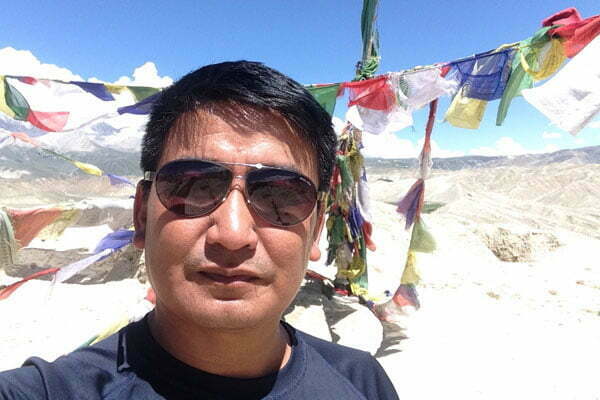
Our Annapurna Circuit remains one of the world’s best hiking trails for good reason. The landscapes of course are incredible, but because the massif is a living landscape, you will also immerse yourself will take you deep into the Annapurna Range, to the base of these incredible mountains. You will experience local hospitality at the local Tea Houses along the way and be in awe of the magnificence of these mountains. There is a reason why the Annapurna trails are considered some of the best trekking in the world. Because they are.
Pradip
Nepal Ops Manager


